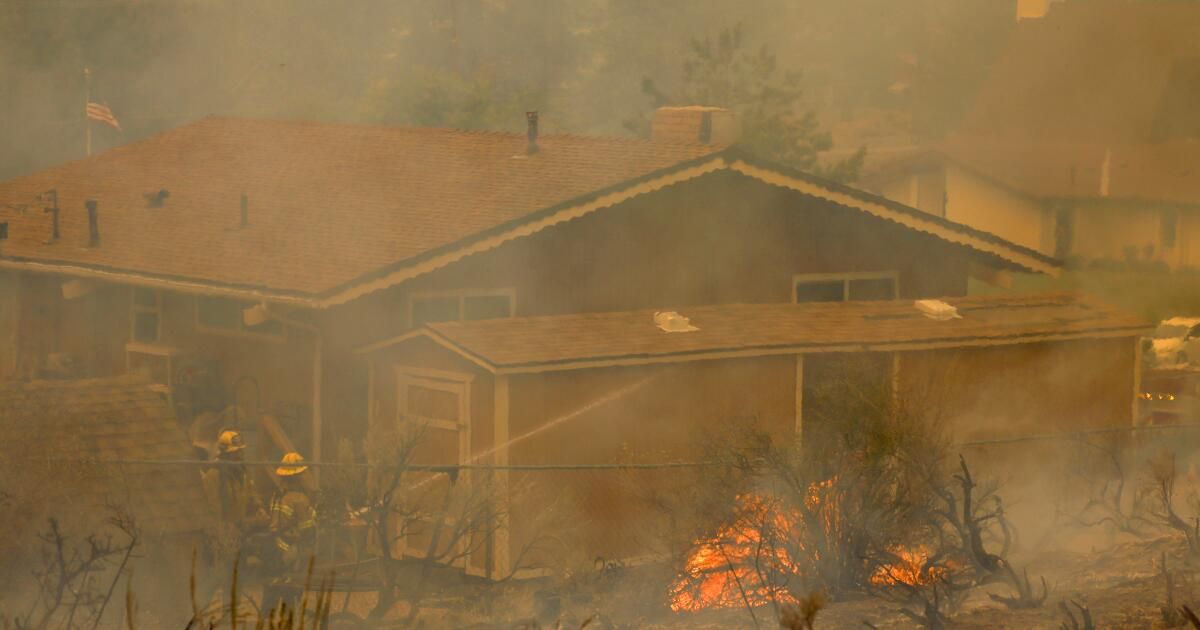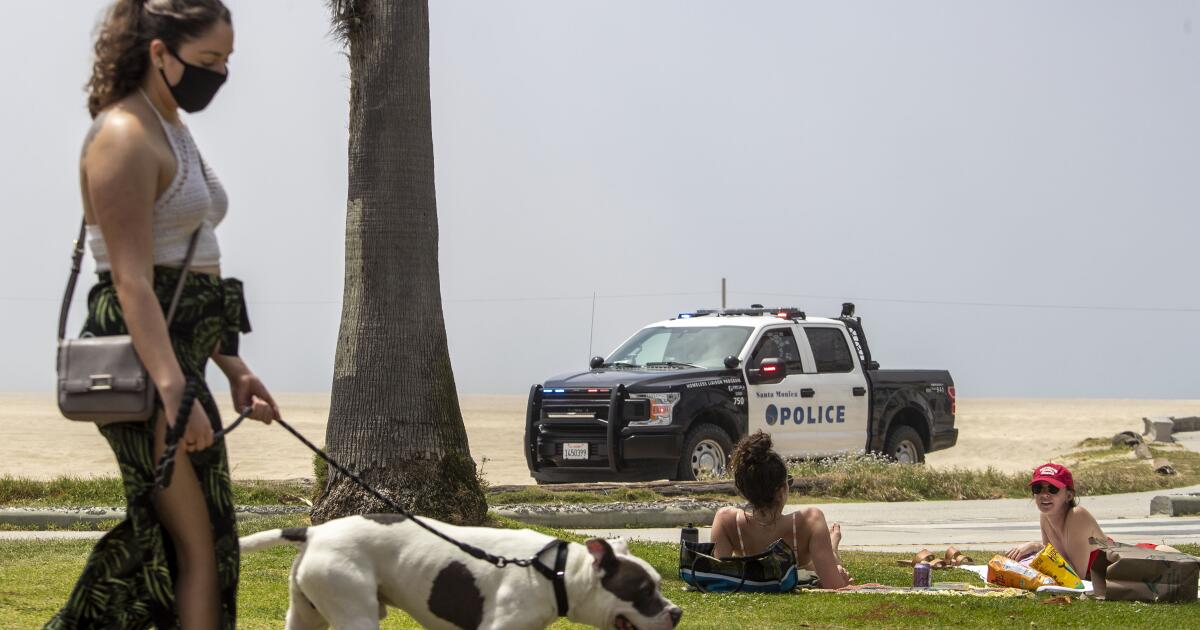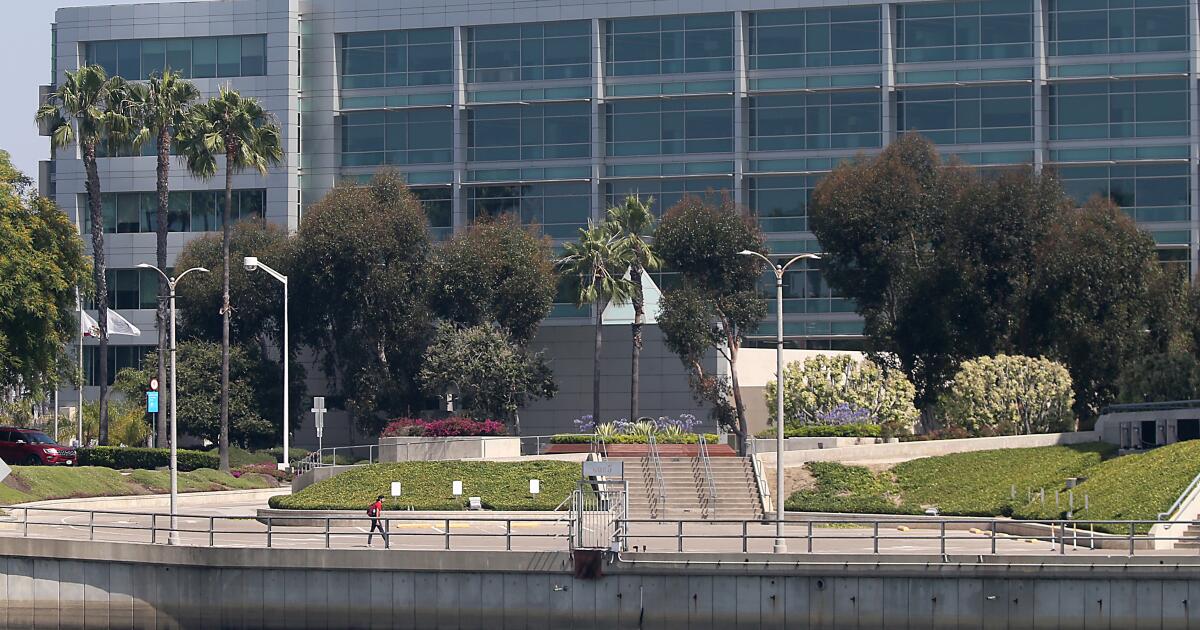Several of Southern California's most popular ski resorts are threatened by wildfires that are ravaging the mountains where skiers ride.
At Wrightwood's Mountain High Resort, staff desperate to save the popular ski spot fired up snow machines to keep the flames from the bridge fire at bay.
The fire, which has scorched 49,000 acres in the Angeles National Forest, grew in size late Tuesday, burning homes and sending flames through trees toward Mountain High's chairlifts. Despite harrowing images captured by the resort's cameras, all chairlifts and main buildings survived with “little to no damage,” the resort wrote on social media Wednesday.
“Thank you to all the employees and firefighters for their hard work. Our deepest condolences to the Wrightwood families who may be suffering. We are with you!” the resort wrote in the post.
Meanwhile, ski resorts in the Big Bear region hoped to stay standing as the Line Fire raged nearby, putting the mountain community on edge. The blaze, which started last week, has already scorched more than 34,000 acres and was 14% contained as of Wednesday.
Crews were setting up equipment on the hills of Snow Summit and Bear Mountain and trying to create defensive perimeters around buildings, chairlifts and other improvements, resort spokesman Justin Kanton said as he sat in his office on the smoke-shrouded property.
At Snow Valley in Running Springs, which was closer to the front line of the fire, crews were using snow guns to saturate the ground in an attempt to prevent embers from taking hold, Kanton said.
Resorts have suspended operations until further notice.
Kanton, 44, a nine-year resident of Sugarloaf, south of Big Bear City, said he enjoys the abundant nature and varied climate but has increasingly seen large fires encroach on the peaceful community.
“It’s one of the few places in Southern California where we actually have four seasons,” he said. “Unfortunately, it seems like more and more we’re starting to have a fifth season, which is fire season.”
Big Bear Mountain Resort, which operates Snow Summit, Bear Mountain and Snow Valley resorts, reported it had its snowiest February on the mountain since at least 2000. The snowy winter, which helped plants grow, was followed by a hot, low-precipitation summer that dried out plants.
As Kanton sat in his office Wednesday, he watched as ash particles fell from the sky. Normally, he can see the north shore of Big Bear Lake from his window, but that day, haze prevented him from seeing. The west end of town was under an evacuation order, and the rest of the city was told to prepare to evacuate if conditions worsened.
Kanton said he was prepared to leave town if necessary and would likely head to Palm Springs to stay with friends. There is currently only one way out — taking the winding Highway 18 toward Lucerne Valley — so he hopes that if push comes to shove, people will be patient and not panic.
“These things can escalate pretty quickly, especially given the weather conditions we’ve had,” he said.
Big Bear Lake City Manager Erik Sund is hopeful that the fires that have burned in the valley in recent years, including the Radford Fire in 2022, will help mitigate the current blaze by reducing the fuel available for the flames.
But he remains concerned about damage to roads, given that all routes in and out of town have been closed except for Highway 18. In addition to creating a potential choke point in the event of an emergency, the closures hamper residents commuting to work and tourists who want to take advantage of Big Bear's hiking trails and other attractions.
“Once we get through this fire, the next thing we’ll do is evaluate all those things,” he said. “Because before we know it, it’ll be winter and we’ll want to have visitors.”
Times staff writer Hannah Fry contributed to this report












